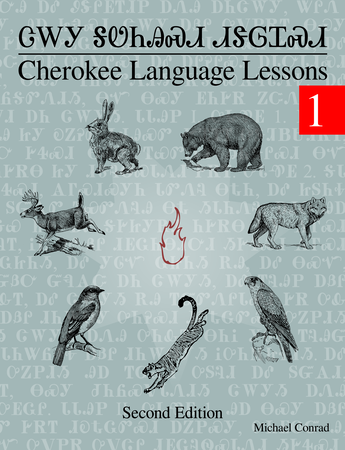
Darrel Kipp, Encouragement, Guidance, Insights, and Lessons Learned for Native Language Activists Developing Their Own Tribal Language Programs.
Rule 1: Never Ask Permission, Never Beg to Save the Language. Never Beg.
Rule 2: Don’t Debate the Issues. Don’t let anyone debate you. Don’t let them start in on you. Don’t let them even start.
Rule 3: Be Very Action-Oriented; Just Act.
Rule 4: Show, Don’t Tell. Don’t talk about what you will do. Do it and show it.
Dialects
Cherokee is grouped into three major dialects:
-
ᎡᎳᏘ (Elati).
This dialect was historically spoken by inhabitants of the Lower Towns in the vicinity of the South Carolina–Georgia border before the forced removal of 1838 and uses an “r” sound where the other two dialects use an “l” sound. This is also known as “The Lower” dialect. This dialect is believed to have become extinct around 1900. -
ᎣᏔᎵ (Otali).
This dialect is spoken in Oklahoma and by the Snowbird Community in North Carolina and is known as the “Western” or “Overhill” dialect. -
ᎩᏚᏩ (Kituhwa).
Commonly referred to as the “Eastern” dialect, it is spoken by the Eastern band on the Qualla Boundary in North Carolina, and is known as “The Middle” dialect.
There is no single central form of Cherokee, instead, there are many variations of pronunciation and word usage within each dialect, usually centered around different communities and townships.
The vocabulary and language structure as presented in this lesson material is based primarily on the “Cherokee-English Dictionary (ᏣᎳᎩ-ᏲᏁᎦ ᏗᏕᏠᏆᏍᏙᏗ)” published in 1975 by the Cherokee Nation of Oklahoma, and is commonly referred to as the “Durbin Feeling Dictionary” or “CED”.
The Approach
This lesson material uses many of the concepts from both the TPR and the TPRS language learning approaches.
TPR (Total Physical Response) is a language teaching method developed by James Asher, a professor emeritus of psychology at San José State University. It is based on the coordination of language and physical movement. In TPR, instructors give commands to students in the target language, and students respond with whole-body actions…
https://en.wikipedia.org/wiki/Total_physical_response
☞ The core concept of TPR is physical activity in response to the language being learned.
TPRS (TPR Storytelling) is a method of teaching foreign languages. TPRS lessons use a mixture of reading and storytelling to help students learn a foreign language…
https://en.wikipedia.org/wiki/TPR_Storytelling
☞ The core concept of TPRS is listening to the language as it is used to describe a series of connected events.
Many activities involve TPR by participants performing physical actions in response to commands. As the activities are carried out, TPRS is used to enhance the learning experience by having the participants perform a very simplified form of storytelling by providing different verbal responses based on what is happening or has happened.
One thing both approaches agree on is that students should be listening and only responding with actions only using simple and brief verbal responses when necessary. It usually takes about 30 hours of instruction in a classroom setting before students are ready to start speaking simple sentences. It is important to not force speaking the language before being ready.
In addition to the TPR and TPRS approaches, there are also sections explaining core grammar concepts in combination with a few traditional translation exercises.